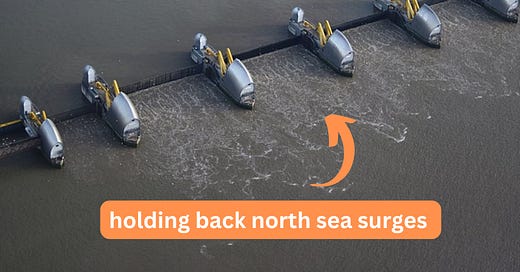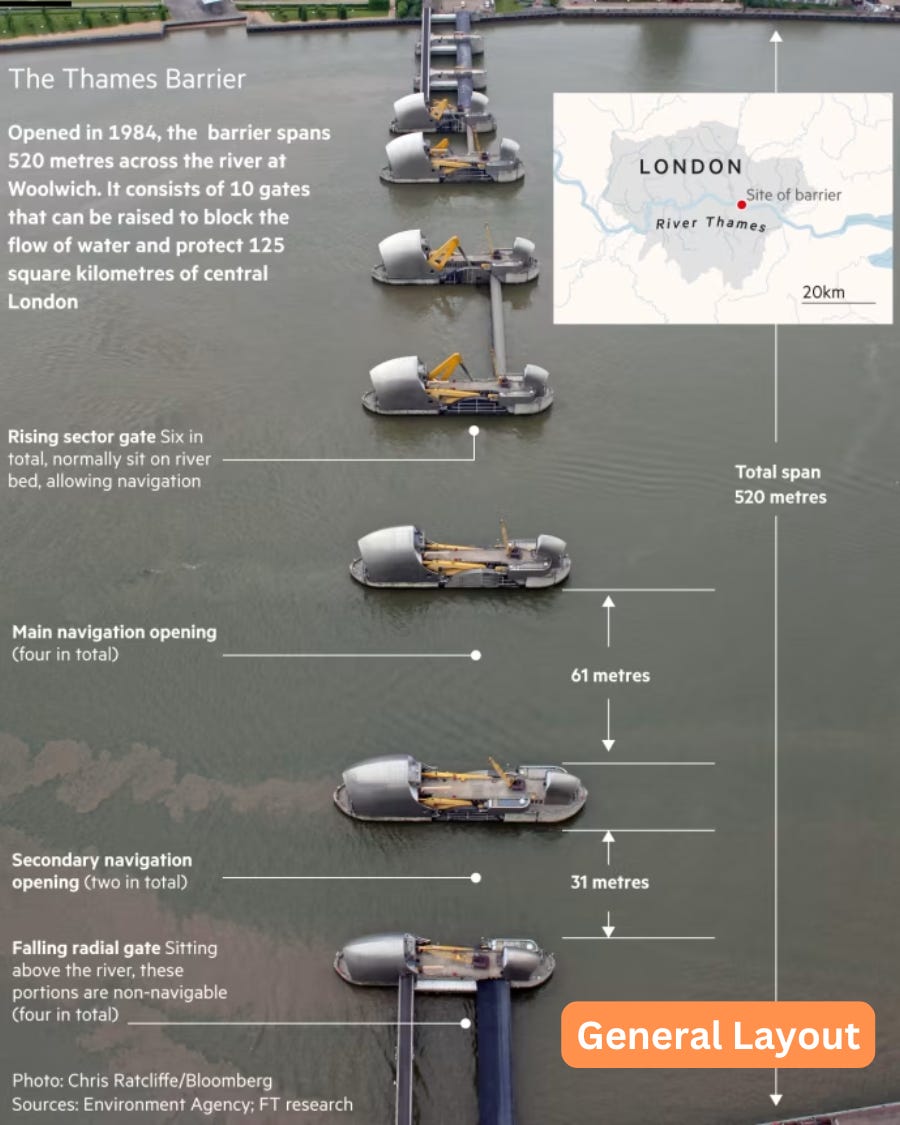Without these flood barriers, London would drown. Flooding over 100 km2 of land putting hospitals, power stations and the London Underground out of action.
The Thames Barrier is a retractable barrier system built to protect the floodplain of most of Greater London from storm surges moving up from the North Sea (capable of resisting a 1-in-1000-year surge).
It's one of the largest movable flood barriers in the world.
When needed, it is closed (raised) during high tide; at low tide, it can be opened to restore the river's flow towards the sea. The floodgates are circular segments that rotate into the raised position.
The gates are also hollow—they fill with water as they sink and empty as they emerge from the river. They are big, at 20.1m high and weighing 3,700 tonnes each.
The barrier was expected to be used 2–3 times yearly. By the mid-2000s, it had been operated 6–7 times a year (there was an incredible outlier of 50 times in the 2013-14 season).
I think the whole thing is marvellous, especially the beauty of the stainless steel-clad shells stands out. It's more sculpture than public infrastructure.
I was fortunate to work on the maintenance of this barrier for a short period as a young engineer. I should have appreciated that opportunity more, so now I have to make up for it by writing about it.









